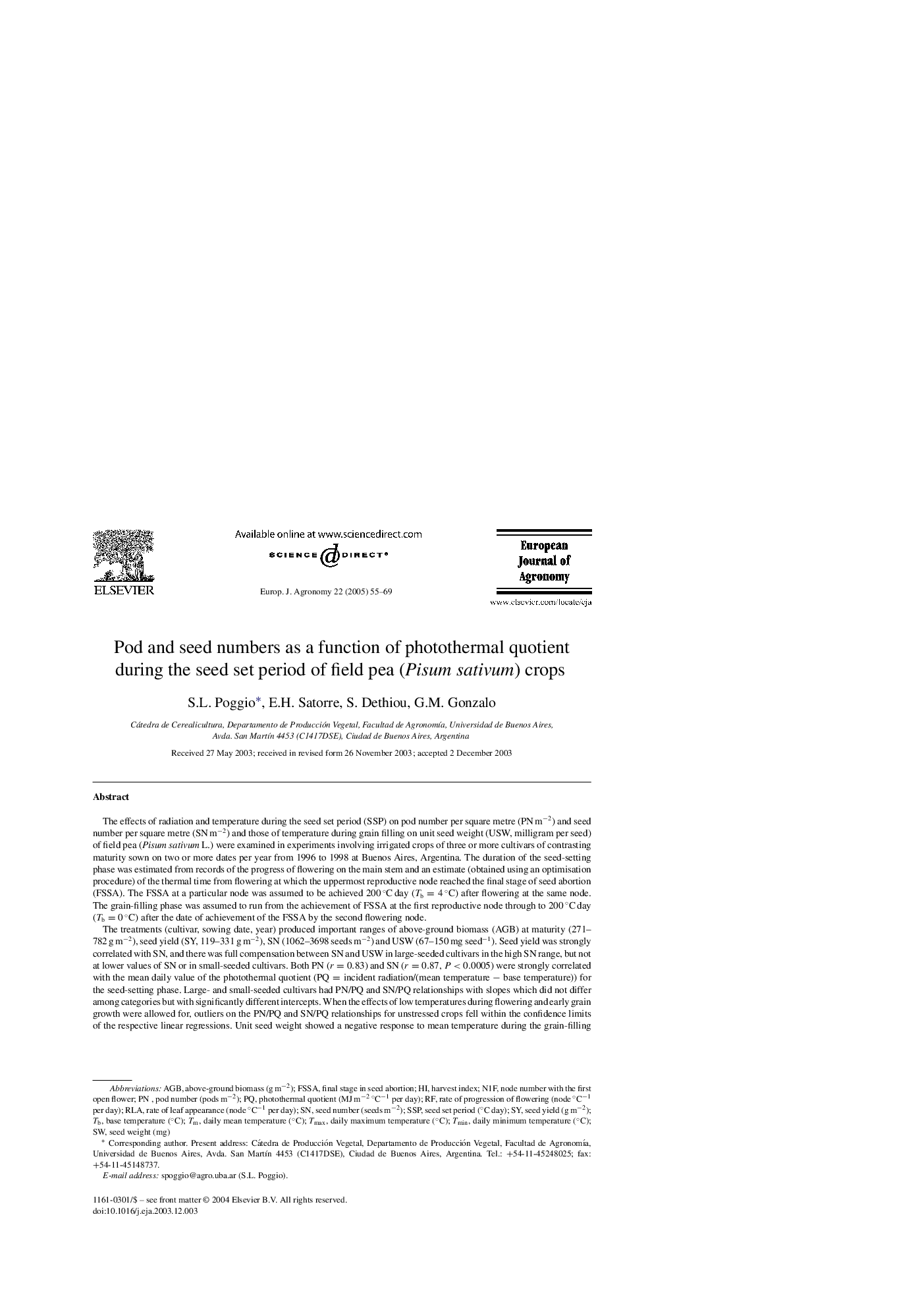| Article ID | Journal | Published Year | Pages | File Type |
|---|---|---|---|---|
| 10116668 | European Journal of Agronomy | 2005 | 15 Pages |
Abstract
The treatments (cultivar, sowing date, year) produced important ranges of above-ground biomass (AGB) at maturity (271-782 g mâ2), seed yield (SY, 119-331 g mâ2), SN (1062-3698 seeds mâ2) and USW (67-150 mg seedâ1). Seed yield was strongly correlated with SN, and there was full compensation between SN and USW in large-seeded cultivars in the high SN range, but not at lower values of SN or in small-seeded cultivars. Both PN (r=0.83) and SN (r=0.87, P<0.0005) were strongly correlated with the mean daily value of the photothermal quotient (PQ=incident radiation/(mean temperature â base temperature)) for the seed-setting phase. Large- and small-seeded cultivars had PN/PQ and SN/PQ relationships with slopes which did not differ among categories but with significantly different intercepts. When the effects of low temperatures during flowering and early grain growth were allowed for, outliers on the PN/PQ and SN/PQ relationships for unstressed crops fell within the confidence limits of the respective linear regressions. Unit seed weight showed a negative response to mean temperature during the grain-filling phase in large- and small-seeded cultivars. We conclude that the relationships established in these experiments, taken together with previous work by other authors, constitute a robust basis for modelling the yield of unstressed field pea crops.
Keywords
Related Topics
Life Sciences
Agricultural and Biological Sciences
Agronomy and Crop Science
Authors
S.L. Poggio, E.H. Satorre, S. Dethiou, G.M. Gonzalo,
